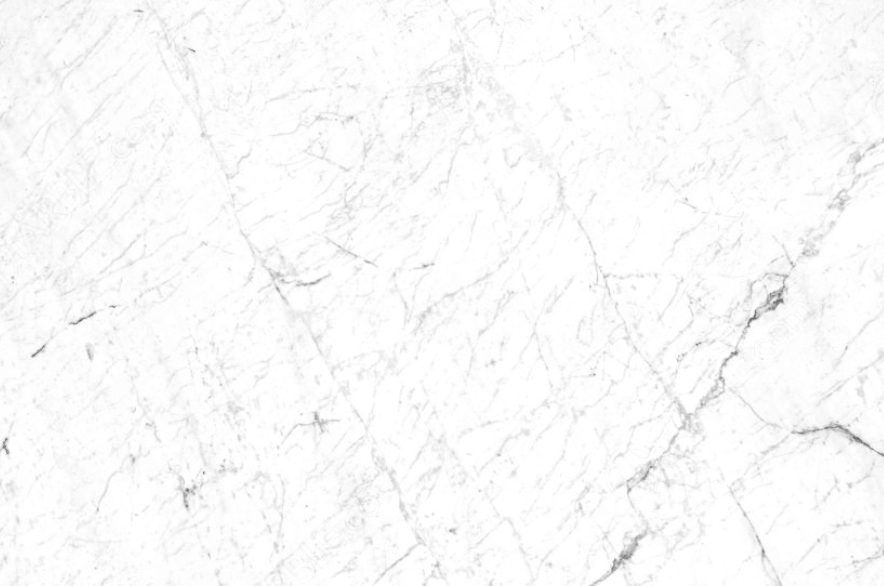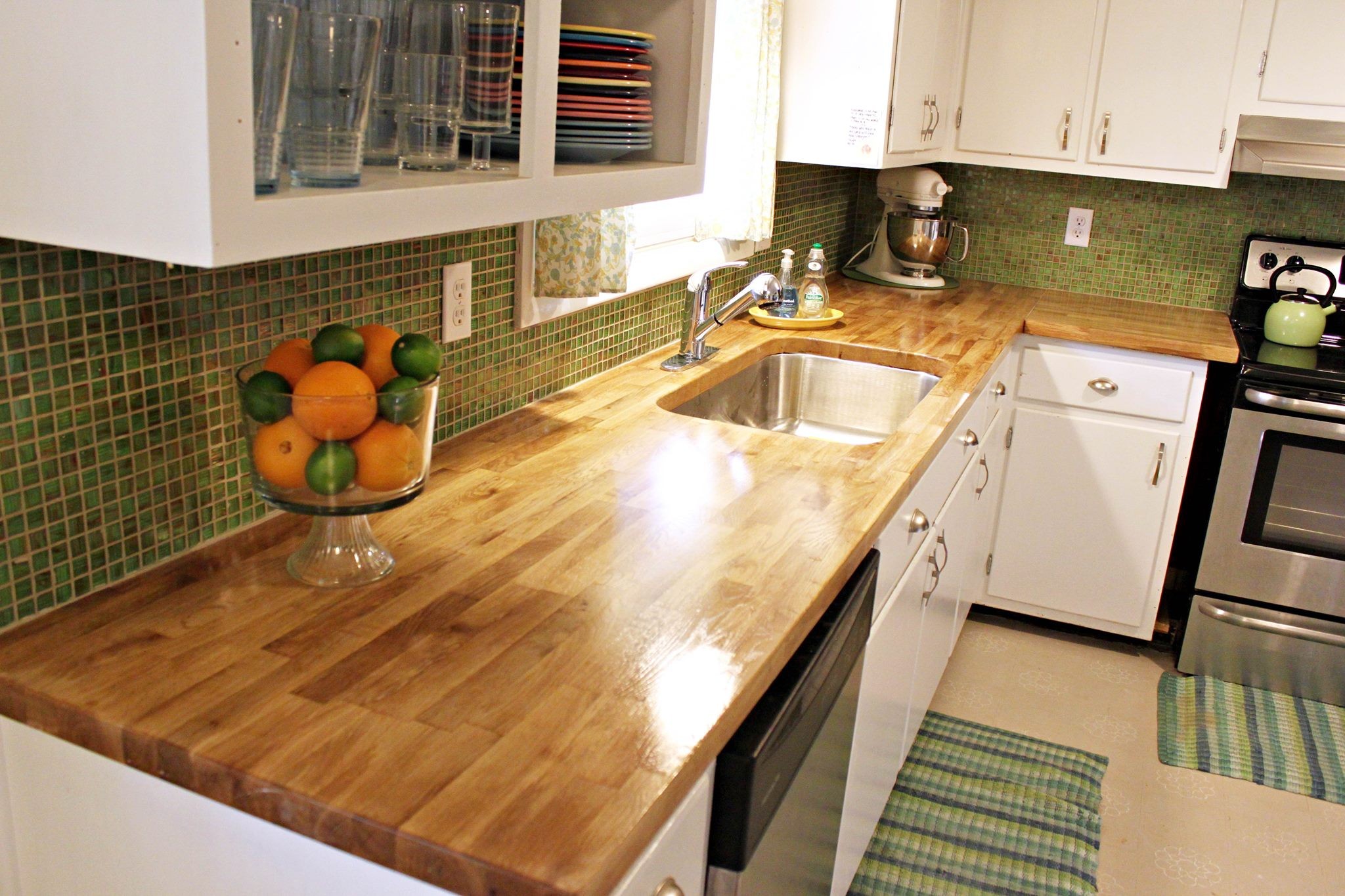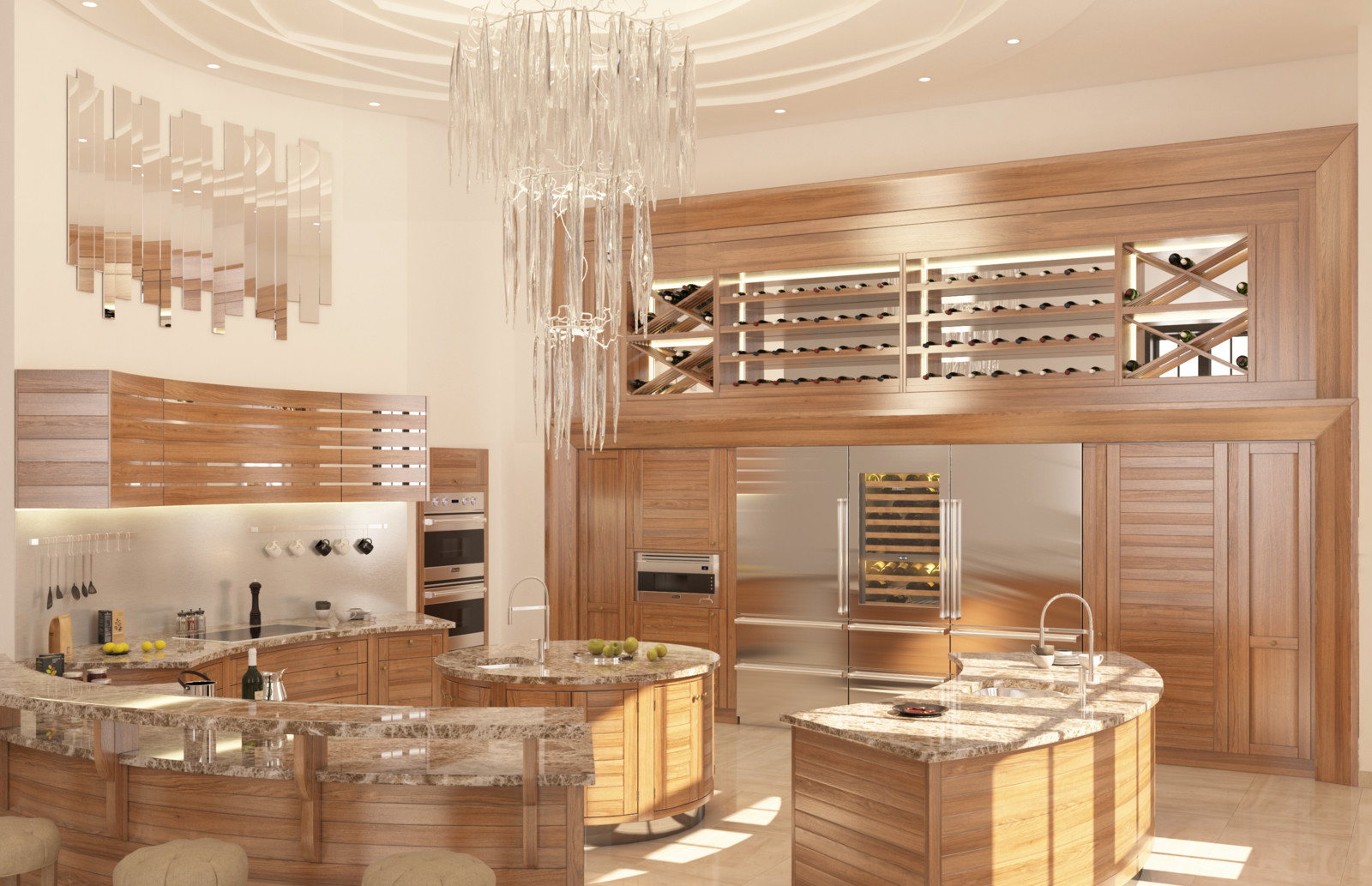Table of Contents
.png)
When designing a kitchen or bathroom, it is important to make sure everything goes well together. Kitchen designs are often focused on countertops, appliances, and cabinets; while the bathroom has vanity, walls, and bath sections. A key ingredient in both interior designs is having a matching floor.
Pairing a floor with a marble countertop can seem tricky at first. There are so many floor designs, patterns, colors, and materials that it can seem like a daunting task choosing what best goes with new marble countertops.
That is why we are here to help make the situation simpler. This article will break down the thought process so you can decide what flooring goes with marble countertops.
Set Tone
When choosing what floor goes with marble countertops, answer the following questions to start the creative process.
1. What is the tone of the room?
By understanding what specific tone you want the room to have, you can properly sort through colors, designs, and patterns with the corresponding tone.
2. What emotions or feelings are you trying to express?
Every room has its own feel in the house. Kitchens will feel different from bathrooms, which feel different from bedrooms, which can feel different from a dining room. Ask yourself what emotions you want this room to convey and keep that in mind when designing.
3. What do you want to highlight in this room?
Think ahead of what you want guests or others to see when they enter the room. Are there things you want others to notice right away, or have something blended into the background to highlight something else? Understanding if you want to incorporate a focal point will provide much needed clarity for designing the entire room.
4. What colors are in the rest of the room?
A big part of understanding room tone is choosing the appropriate colors to match those feelings. Colors have an immediate and subliminal reaction on people which allows people to feel certain emotions without recognizing them. Analyze the room and notice what are the colors of your marble countertop, backsplash, cabinets, walls, lighting, and decoration?
By understanding the emotional tone of the room through the various colors, decoration, and designs, you can properly choose what type of floor to install.
[get_quote]
Marble Color Coordination
Marble countertops come in a wide assortment of colors, and each color has its own feel and tone. Knowing how to read these colors will provide you with strategy on choosing proper floor designs.
Clean Colors: As the name suggests, these are marble countertops which make the kitchen feel and look clean. Minimalist and Contemporary interior designs are often trending with clean and simple countertop colors, choosing white and black as their prime colors. Classic examples of clean colors are Black Marquina and White Carrara.
.png)
Warm Colors: These marble stones are bright but have a subtle accent of color to make them feel comforting and cozy. Warm marble countertops are heavily utilized in kitchens with other comforting colors like beige, white, red, and black. Examples of warm marble countertops are Crema Marfil, Calacatta Gold, or Rojo Alicante.
.png)
Neutral Colors: These marble stones have a faded appearance, opting for greys, white and black to cast a blank space. Neutral colors are highly desirable in urban-modern interior designs where greys, and metal are the standout colors. Examples of neutral marble countertop colors are Carrara Silver, and Bianco Perla.
.png)
Floor Material
With an understanding of marble colors in mind, we can start discussing the type of floor material that can be paired with your chosen marble countertop.
Ceramic: The term ceramic refers to clay material that has been shaped into a mold through a heating process. Ceramic is very durable, can come in a variety of colors, but easily pairs with warm marble countertops to highlight the natural earth elements in the ceramic clay.
Porcelain: Porcelain is ceramic tile which has been coated in Feldspar dust or sand, then melted together to create a glass-like material. Porcelain is very durable, stain resistant, and comes in a large assortment of colors.
Synthetic Materials: These materials are artificial flooring options which have good durability and have high water resistance.
Laminate Flooring – very durable, attractive, affordable, can be difficult to pair or match with countertops or other flooring.
Vinyl Flooring – very durable, can look like hardwood or tile, very resistant, can stain easily without a protective layer.
Stone: This is a broad subject, encompassing several different types of stone which match well with marble countertops. Popular stone floor options are granite, marble, quartz, quartzite, sandstone, slate, and onyx. Each stone has its own advantages and disadvantages, which must be considered before choosing.
- Marble Floors: easily pairs with marble countertops, but is very soft, has low durability and can form stains quickly.
- Granite Floors: very durable, pairs well with marble countertops, and porous.
- Quartz Floors: artificial stone, very durable, pairs well with marble countertops.
- Quartzite Floors: pairs well with marble countertops, durable, and comes in many colors.
- Sandstone Floors: pairs well with marble countertops, comes in many colors, better for warm tone rooms.
- Slate Floors: pairs well with marble countertops, can be very expensive, very durable.
- Onyx Floors: pairs well with marble countertops, very expensive, can be scratched easily.
Wood: The classic design of marble countertops and wood flooring will always be a popular design, because it has always been appealing. Wood floor tiles come in a variety of shades and can work well to highlight the countertops or add to a warm environment with natural coloring.
Concrete: Concrete is low maintenance, has a wonderful and neutral color for urban interior design aesthetics, known to be eco-friendly as it uses less material than the other floor options, but has the downside of possibly cracking over time. A fun option with concrete is that it can withstand heat well, so if there is room in your budget for heated floors, concrete is a good option for it.
Terracotta: Clay ceramic tile which is made differently from other ceramics to form a different color and texture. Terracotta is another excellent option for a rural and warm interior design to help fit the tone of a comforting and lived in environment.
Floor Design Options
Quick recap, we have the marble countertop colors ready, the types of floors available, and now it is time to understand the many different floor designs available.
Plain Tile: The simplest and easiest style to choose, plain tiles are just one color of tile across the whole floor. No complex shapes, no fancy designs, just a clean set of one color across the floor.
Designed Tiles: These times have slightly different shapes, mainly being elongated or shrunken. Popularly designed tiles are long subway tiles, small, patterned tiles, mosaic tiles, and thin tiles. These tiles can have one color throughout the floor or a combination of colors.
Texture: These designs are very warm and personal, typically seen in wood or in large slabs. Textured tiles have a specific feel when walking on them. Concrete is an excellent option as it has the feel of walking in an urban environment, while still in your home.
[get_quote]
Popular Combinations
Here are some popular combinations that are most often chosen with pairing marble countertops with different types of flooring.
Hardwood Floor + Marble
Hardwood floors are aesthetically pleasing, coming in a variety of shades, and pair perfectly well with nearly all colors of marble countertops. Homes with a Modern Farmhouse or Mid-Century interior designs love the use of incorporating wooden designs and textures.
.png)
Checkerboard Tile + Marble
The classic look of checkerboard tile made from artificial material or porcelain adds more visual design to the kitchen or bathroom, without taking away from the overall tone of the marble countertops. They can transition into one another as well by installing white or black colored marble countertop colors.
.png)
Marble + Marble
The simplest option when trying to find a matching countertop and floor combination is using the same material for both. Nothing is easier than installing a marble countertop and then just using the same material and color for the floors.
Stone + Marble
Stone floors like granite, quartz, and quartzite all pair exceptionally well with marble countertops. The only thing you would have to decide is what color blends well with your countertop.
Subway Tile + Marble
Subway tiles are a popular choice as backsplash and floor design, making it very easy to combine it with marble countertops. The straightforward pattern is recognizable, captures attention, and looks great with light and dark colors of marble.
.png)
Designed Porcelain + Marble
Designed porcelain is beautiful and adds life and creativity to the room. Match it with white, black, or beige marble countertops to create a rich atmosphere with heart and inspiration.
Terracotta + Marble
Terracotta automatically triggers the mind to think of earthy tones and colors. Lean into the design more with black, beige, or gray marble to have a room that feels like you are connected to the earth while you prepare your meals.
.png)
Concrete + Marble
Concrete is a tough texture that looks perfect for urban interior designs to feel like city streets in the home. Pairing white marble countertops with the grey colors concrete keeps the city aesthetic while adding some gentle color in the room. Alternatively, keep the all grey tones and install a grey marble countertop to match.
.png)
[get_quote]
Combination Tips
Designing a room is all about research and being creative. Here are a few tips to keep reminding yourself when thinking of the ideal floor and marble combination.
> Match colors that blend well together.
> Try not to have a floor pattern that competes or keeps focus. Unless you want your guests staring at the floor, have the floors and countertop work together instead of competing for attention.
> Have fun! It is your room you are designing. There are no real rules for interior design since it is about what is pleasing to you, the homeowner. You always have final say in what you want your room to look like.
Conclusion
Finding the right flooring to complement your marble countertops is going to take some thought to see what type of material you want to use, what colors pair together, what designs speak to you, and what tone you want to set. The work and research will pay off in the end when you are standing in a room you feel comfortable in and look beautiful.

















 The article helped me immensely
The article helped me immensely
 I’m now more informed on the subject
I’m now more informed on the subject
 I have questions about Marble.com
I have questions about Marble.com
 The article was not accurate at all
The article was not accurate at all
 There is a serious lack of information
There is a serious lack of information
 I have questions about Marble.com
I have questions about Marble.com